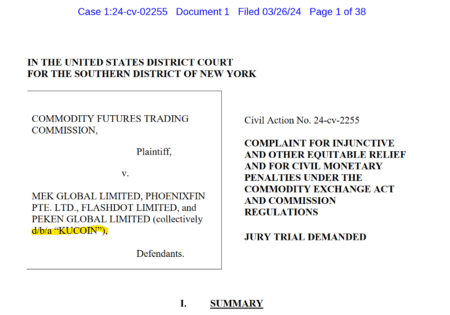Wall Street Faces Bitcoin’s Existential Threat
The crypto market is undergoing significant upheaval, with Wall Street bracing for potential game-changing impacts stemming from legislative and macroeconomic developments. President Donald Trump’s administration has accelerated efforts to regulate the crypto sector, including a stablecoin bill that could allow interest payments to holders of dollar-pegged cryptocurrencies. This move is seen as a double-edged sword: it could bolster crypto adoption but also destabilize traditional banking systems by encouraging funds to flow out of insured bank accounts into riskier crypto holdings.
Arthur Wilmarth, a law professor at George Washington University, has warned that this dynamic poses a serious risk to the banking sector and broader financial system, potentially leaving taxpayers exposed to fallout from crypto firm collapses. Meanwhile, BlackRock’s CEO has issued stark warnings about the U.S. dollar’s future, adding to the uncertainty surrounding Bitcoin and other digital assets.
Crypto Price Crash: Latest Developments
The crypto market has entered freefall following escalating global trade tensions and tariff wars initiated by President Trump. Bitcoin (BTC) dropped below $75,000 on April 7, marking one of its steepest declines in 2025. At the time of writing, Bitcoin is trading near $79,130, up 3.6% over the past 24 hours. Major altcoins like Ethereum (ETH), Solana (SOL), and XRP have also suffered double-digit losses:
- ETH fell 16.44%, dropping below $1,500 (recovered on Tuesday by 5.75%).
- SOL declined by 15.5%, nearing the $100 threshold (recovered on Tuesday by 8%).
- XRP lost 14%, trading at $1.77 after breaking key support levels (recovered on Tuesday by 5.75%).
The broader crypto market capitalization has shed $300 billion in just 24 hours, reflecting heightened risk aversion among investors[7].
Market Outlook
Despite the crash, Bitcoin remains resilient compared to traditional stock markets. Analysts predict potential recovery scenarios for BTC by late April, with prices possibly rebounding to $93,344–$116,014 if favorable catalysts emerge. However, trading volumes remain subdued—down 75% from their July peak—indicating limited momentum for a sharp upward move in the short term.
Stablecoin Legislation: Implications for Financial Systems
Congress is deliberating two competing stablecoin bills that could reshape the financial landscape:
- The House bill prohibits interest payments to stablecoin holders.
- The Senate bill allows limited interest payments but stops short of full authorization[2].
If interest-bearing stablecoins gain approval, traditional banks may face significant challenges as consumers shift funds toward these digital assets. Institutional players like PayPal and Bank of America are already preparing to enter the stablecoin market, drawn by Tether’s profitability and growth potential[2][5].
Key Takeaways
- Volatility persists: Bitcoin’s price remains under pressure due to macroeconomic concerns and regulatory developments.
- Legislation in focus: Stablecoin bills could redefine financial systems but carry risks for traditional banks.
- Institutional interest grows: Despite current challenges, major players are positioning themselves for long-term opportunities in digital assets.
Investors should monitor legislative updates closely while preparing for continued volatility in crypto markets.





